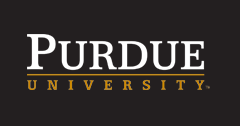Keywords
Acoustics, sonic booms, supersonic aircraft, sound perception, annoyance
Presentation Type
Event
Research Abstract
Supersonic flights can greatly shorten the flight time in the world and provide convenience for people all over the world. However, commercial supersonic flights over US territories are banned by Federal Aviation Administration in 1973 due to the intolerably loud noise of sonic booms. Recently, a few demonstrator aircraft have been built that produce much quieter booms. To determine whether the new boom is acceptable, many laboratory researchers are using simulated sonic boom signals for subjective test because the method is easy and cost-efficient, whereas it might not have enough fidelity to address the effect of the original one. In the research, the focus is mainly on the processing and simulation of the sonic booms heard both outdoors and indoors. For sonic booms heard outdoors, Fourier transform and filter design method was used to simulate the signal. For sonic booms heard indoors, the transmission effect and the reverberation were considered and simulated by adding filters to the outdoor signal. After the simulation, a previously developed annoyance model was used to determine how sound transmission and reverberation influence the annoyance. The expected output will be the high-fidelity simulated outdoor and indoor boom signals, and a revised previous program to generate the indoor signals given the outdoor signals. Also, the previously developed program will give the influence of transmission and reverberation in the annoyance.
Recommended Citation
Yingxiang Jiang and Patricia Davies,
"Improving Simulations of Sonic Booms Heard Indoors and Outdoors and Explore How the Sound Characteristics Affect Annoyance"
().
The Summer Undergraduate Research Fellowship (SURF) Symposium.
Paper 81.
https://docs.lib.purdue.edu/surf/2013/presentations/81
Included in
Improving Simulations of Sonic Booms Heard Indoors and Outdoors and Explore How the Sound Characteristics Affect Annoyance
Supersonic flights can greatly shorten the flight time in the world and provide convenience for people all over the world. However, commercial supersonic flights over US territories are banned by Federal Aviation Administration in 1973 due to the intolerably loud noise of sonic booms. Recently, a few demonstrator aircraft have been built that produce much quieter booms. To determine whether the new boom is acceptable, many laboratory researchers are using simulated sonic boom signals for subjective test because the method is easy and cost-efficient, whereas it might not have enough fidelity to address the effect of the original one. In the research, the focus is mainly on the processing and simulation of the sonic booms heard both outdoors and indoors. For sonic booms heard outdoors, Fourier transform and filter design method was used to simulate the signal. For sonic booms heard indoors, the transmission effect and the reverberation were considered and simulated by adding filters to the outdoor signal. After the simulation, a previously developed annoyance model was used to determine how sound transmission and reverberation influence the annoyance. The expected output will be the high-fidelity simulated outdoor and indoor boom signals, and a revised previous program to generate the indoor signals given the outdoor signals. Also, the previously developed program will give the influence of transmission and reverberation in the annoyance.

